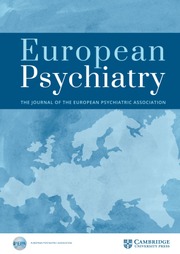Article contents
958 – Efficacy Of Lisdexamfetamine Dimesylate In Children And Adolescents With Attention-deficit/hyperactivity Disorder: Effect Of Age, Sex And Baseline Disease Severity
Published online by Cambridge University Press: 15 April 2020
Abstract
In a European, phase 3 study (SPD489-325), lisdexamfetamine dimesylate (LDX) was more effective than placebo in improving symptoms and global functioning in children and adolescents with attention-deficit/hyperactivity disorder (ADHD).
To evaluate the impact of age, sex and baseline disease severity on efficacy outcomes in SPD489- 325.
This 7-week, double-blind, parallel-group, dose-optimized study enrolled patients aged 6-17 years with ADHD. Patients were randomized (1:1:1) to once-daily LDX (30, 50 or 70mg/day), osmotic-release oral system methylphenidate (OROS-MPH; 18, 36 or 54mg/day) or placebo. Efficacy outcomes were analysed in patients dichotomized by age (6-12 years [n=229] or 13-17 years [n=88]), sex (male [n=255] or female [n=62]) and baseline ADHD Rating Scale version IV (ADHD-RSIV) total score (28-41 [n=161] or 42-54 [n=152]). Endpoint was the last on-treatment visit with a valid assessment.
At endpoint, differences (active-placebo) in least-squares mean changes from baseline in ADHD-RS-IV total scores were statistically significant in all age, sex and ADHD-RS-IV total score subgroups for LDX (p< 0.001; effect sizes, 1.68-2.26) and OROS-MPH (p< 0.01; effect sizes, 0.88-1.46). Proportions of patients with a Clinical Global Impressions-Improvement rating of 1 (very much improved) or 2 (much improved) were statistically significantly greater than placebo at endpoint in all subgroups receiving LDX (p< 0.01) and in all subgroups except females receiving OROS-MPH (p< 0.05).
LDX showed greater efficacy than placebo in children and adolescents with ADHD, regardless of their age, sex or baseline disease severity.
Supported by: Funding from Shire Development LLC.
- Type
- Abstract
- Information
- European Psychiatry , Volume 28 , Issue S1: Abstracts of the 21th European Congress of Psychiatry , 2013 , 28-E392
- Copyright
- Copyright © European Psychiatric Association 2013
- 1
- Cited by



Comments
No Comments have been published for this article.